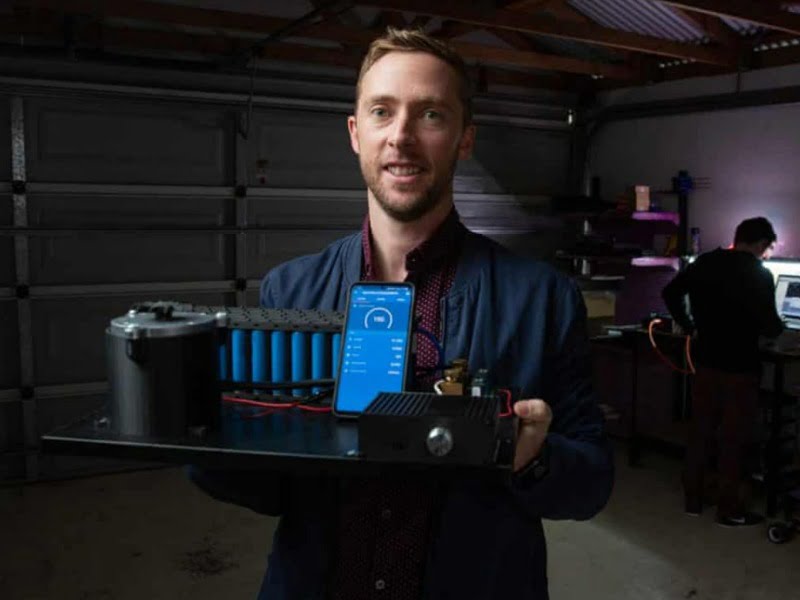Brisbane battery casing design company Vaulta was founded in response to the looming environmental disaster of batteries from electric vehicles. Currently they mostly go to landfill, a massive waste of resources and an environmental menace.
Our houses, our cars, our gadgets, our planes – all of them are going renewable, and that energy needs a place to be stored.
Increasingly, we’re going to be reliant on batteries to bring so many items around us to life. But while batteries will be the key to our renewable energy future the issue of recycling and reusing them is fast becoming a looming problem.

Current battery designs mean we weld them, glue them into cases, screw them, and suck the life out of them. Once that is done it becomes a complicated, and therefore expensive, process to recycle them – they all end up in the bin and landfill.
With approximately 350,000 electric cars sold every month the world is hooked on batteries and usage will climb drastically in the next decade. And each one of those batteries will need to be replaced.
The impact will be sending 90,000 tonnes of batteries a month into landfill. A comparison would be the equivalent of dumping 94 of South Australia’s mega-battery into landfill every 30 days.
Because we’re dumping rather than recovering there is an associated and considerable cost burden on car makers, battery companies and any businesses that rely on batteries. Whether it is a cost issue, or an environment issue it will be unsustainable.
The alternative is to design a better battery. You won’t hear it often, but for batteries it’s what’s on the outside that counts.
By changing the current battery case designs we can remove the barriers to make them cheap to recycle and easy to re-use. A better and simpler design also means minimal labour, and hence cost, would be required to replace a battery’s existing cells.
From a design perspective, we need to go back to the source of the design and the design intent – that is, what you intend to do with the product. For the most part, that isn’t being considered from the design aspect of how battery modules are produced.
At the moment, there’s a fast and logical way to put together batteries, which most manufacturers follow, but it does not consider what happens at the end of that first life. Because if it’s designed to be able to be disassembled, then that creates the opportunity to reuse the batteries and be able to access the battery cells without using destructive processes.
It is important to note that those destructive processes are also risky processes.
When disassembling batteries, the great unknown is the residual voltage – how live does the battery remain? Handling these things is dangerous and cumbersome, but if you have a design that allows the batteries to just be disassembled and at its most basic lay all the batteries out onto a table, then you don’t need to worry about the voltage because it’s already done, you’ve disassembled it.
There’s no hard voltage or worrisome voltage to be concerned about with what you do.
The overarching focus must be design for disassembly. If we design for disassembly, we get better maintenance, we get less energy used in the assembly process, we get better quality cells at the end of their first life that can be sent for reuse in second life applications, and we get fewer new batteries required in the first place.
Not every application needs a new cell. Just like we all drive different aged cars, different age cells can get us places also, or power our homes or reduce the load on the grid.
But we need to start having the conversation about design and recycling now, and it needs to focus on what happens at the very start of the battery life cycle.
If we work harder at what happens at the beginning, it makes it easier to resolve the problems before we end up with another landfill crisis.
Dominic Spooner is an industrial and product designer, and founder and CEO of Brisbane-based Vaulta, a company specialising in battery casing innovation.
This story was originally published by @AuManufacturing. You can subscribe to the @AuManufacturing newsletter here.
Picture: Vaulta EV concept (main) and below, Dominic Spooner
Do you know more? Contact James Riley via Email.
